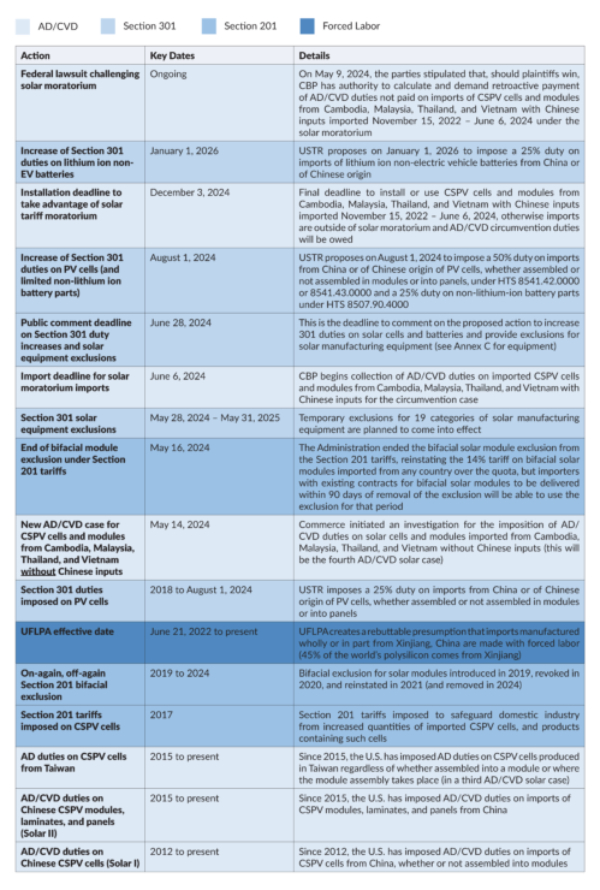The solar industry is starting to get whiplash. Over the past year in particular, the industry has experienced a whirlwind of regulatory changes making solar tariffs some of the most complex tariffs in all of U.S. importing history. We should not expect the changes to lessen as the solar industry remains a focus for policymakers, industry stakeholders, and consumers. Given this frenetic pace (plus the upcoming June 28 deadline for public comments on the recent Section 301 duty increases), we provide this guide to current tariff and trade actions as a guide to help those in the industry keep afloat.

Key Takeaways
The key takeaways from over a decade of solar tariff activity are as follows:
- Knowledge is power. Seek to keep updated on the solar tariff changes.
- Protect yourself. When entering new solar contracts and module supply agreements, include provisions to account for potential changes in the various applicable tariffs.
- Check your contracts. It is never too late to examine solar contracts and module supply agreements to confirm liability should CBP seek retroactive duties following the solar moratorium litigation or simply when recalculating AD/CVD rates.
- Know your supply chain. Conduct supply chain tracing and mapping prior to import. CBP only allows 30 days to provide fulsome evidence down to the materials level should CBP detain an import CBP suspects was made with forced labor. CBP is making use of AI to identify such shipments.
The authors acknowledge that even this cheat sheet is complex and subject to changes, so please do not hesitate to reach out to the authors with any questions.
The content of this article is intended to provide a general guide to the subject matter. Specialist advice should be sought about your specific circumstances.
We operate a free-to-view policy, asking only that you register in order to read all of our content. Please login or register to view the rest of this article.



